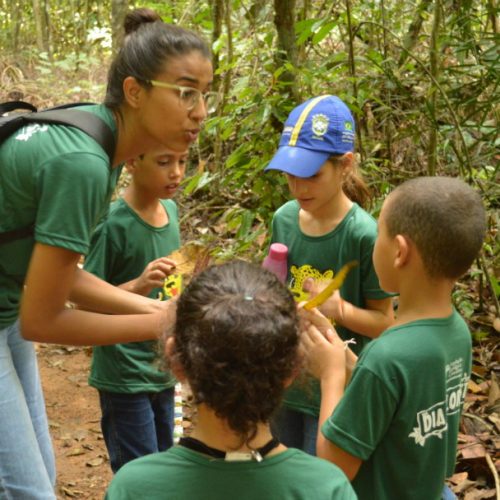
AMAZON SCHOOL
SOWING THE FUTURE OF THE AMAZON
The Amazon School Program, begun in 2002, was the co-creation of the president of the Cristalino Ecological Foundation (FEC), Vitória Da Riva, and the biologists Silvio Marchini and Edson Grandisoli. The principal aim is to involve young people in the care of the planet’s greatest natural heritage: its biodiversity. The target audience of the program are teachers and students, since they are, through their knowledge-building relationship, the multipliers of this process.
Under the program, we are currently running the A Day In The Forest project, which operates in a 60-hectare area of preserved native forest within the urban limits of Alta Floresta. Established in 2008, the project serves schools within the municipality and the wider area and involves activities such as walks, looking at the fauna and flora, artistic and dynamic activities, all within the Amazon rainforest. The objective is to entertain while developing awareness and also arousing curiosity and a new way of looking at and connecting with the forest, an environment that is simultaneously so close and yet so far removed. Donating, you provide children from public schools with this incredible experience of getting to know the Amazon Rainforest.
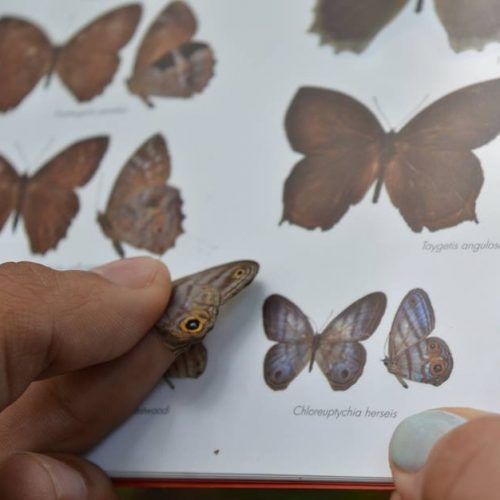
MONITORING THE BIODIVERSITY OF THE CRISTALINO RPPNs
We need to know our biodiversity in order to preserve
The Amazon region of Mato Grosso is under heavy deforestation pressure, where the agricultural and real estate frontier is advancing towards the forest. In this region, the Cristalino RPPNs, along with other conservation units, is part of an important ecological corridor. Due to the intense suppression of habitat it suffers, and because it is home to biodiversity, Amazonia Mato Grosso is considered as one of the most important conservation areas, emphasizing the importance and urgency of efforts that promote the knowledge and protection of its biodiversity.
In partnership with experts from Brazil, is conducting a major study with the species of Butterflies, Birds, Mammals and Plants of Cristalino Reserves, with the objective of knowing and setting goals to protect this biodiversity that suffers serious risks.
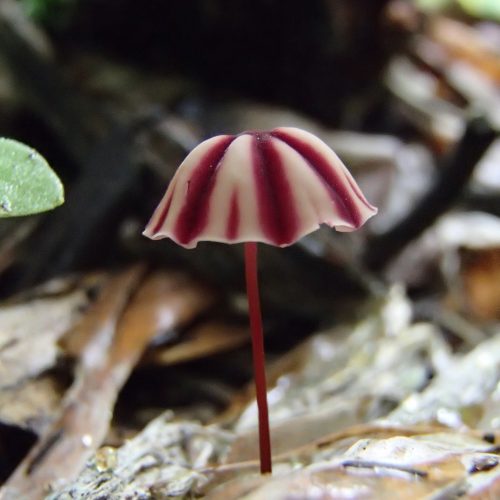
THE CRISTALINO FUNGI PROJECT
Developing knowledge about this very important ecological group is essential
Studies on the diversity of fungi are still very scarce, with only around 7% of the total variety actually known to science. These organisms are essential to the workings of terrestrial ecosystems and are the focus of broad research that is taking place in the Cristalino RPPNs, in a partnership between the Cristalino Ecological Foundation (FEC), Laboratory of Mycology of the Federal University of Santa Catarina – UFSC, and the German Parataxonomist Susanne Sourell.
The aim of the project is to learn the diversity of macroscopic fungi within the region, to set future goals for applied studies in the fields of the Biological, Agrarian and Health Sciences. Researchers from Brazilian and foreign universities are also involved, helping to identify and describe species that are possibly new to science. This project has already produced some excellent results, such as a two photographic guides, organized by Susanne and another experts and collaborators. Donating, you help us make incredible discoveries about the Amazonian Fungi!!! CLICK TO DONATE
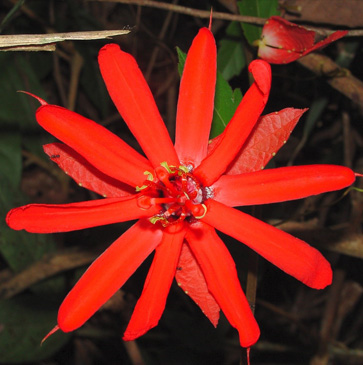
CRISTALINO FLORA PROGRAM
KNOWLEDGE IS KEY TO THE CONSERVATION AND APPRECIATION OF THE SOUTHERN AMAZON
In order to promote the conservation of the Cristalino region through the generation of scientific knowledge of the region’s flora, the Cristalino Flora Program was set up in 2006, under a partnership between the FEC and the Royal Botanic Gardens at Kew, in the United Kingdom, supported by UNEMAT (State University of Mato Grosso), Fauna & Flora International (FFI) and Rio Tinto. It was the first study to be conducted of the flora in the north of Mato Grosso state and as a result, 1,366 species of vascular plants (626 genera and 151 families) were catalogued, across eight different types of vegetation.
The materials were herborized and sent to UNEMAT, thereby assisting the setting up of the first Herbarium of the Southern Amazon (HERBAM) on the UNEMAT campus in Alta Floresta. In addition to producing the book Vegetation and Plants of the Cristalino, the program contributed considerably to knowledge of the local flora and especially the discovery and description of species that were new to science, such as the Cristalino passion flower (Passiflora cristalina), ichthyothere (Ichthyothere sasakiae), sciadocephala (Sciadocephala gracieliae) and the guarea (Guarea zepivae).
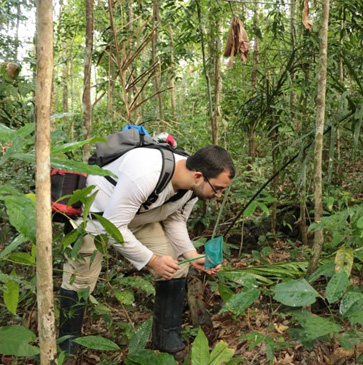
REGULATING THE RESEARCH
SUPPORT TO RESEARCH AIMED AT EXPANDING AND DISSEMINATING KNOWLEDGE
This project, funded by the Boticário Group Foundation, focuses on the organization, regulating the usage and dissemination of research carried out in the Cristalino Nature Reserves. A database has been set up to make the research results available to interested parties. Rules have been drawn up for the use of the reserves by researchers, to ensure safety; that information (conservation education) is provided to the local communities and visitors; that gaps in knowledge, identified in the management plans, are addressed; that the research carried out contributes to the conservation of the region; and the generation of financial support for the management of the reserves.
Once the requirements have been met, the FEC kicks off an activity, aimed at increasing knowledge about the region, through partnerships with Brazilian and foreign teaching and research institutions. One result has been technical cooperation arrangements with the UFMT (Federal University of Mato Grosso) and UNEMAT (State University of Mato Grosso) in Alta Floresta. The Floresta Amazônica Hotel and the Cristalino Lodge are both partners in this endeavour.
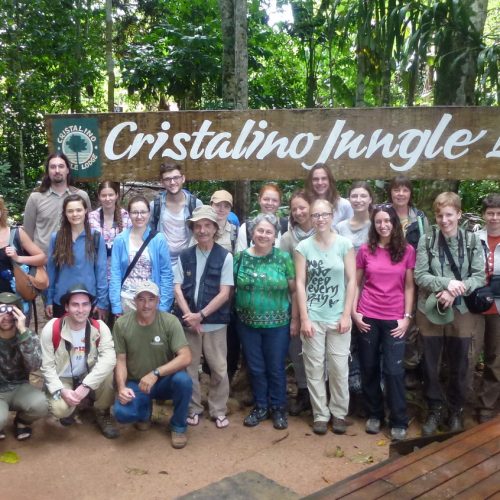
STUDIES OF THE ENVIRONMENT
Partnership between FEC and University of Tübingen promotes field lessons in the Amazon Forest.
For 12 years, students from the University of Tübingen (Germany) of the Zoology and Geoecology courses come to Brazil under the guidance of Professor Rainer Radtke to conduct field research. On the Tübingen – Brazil trip, they have the opportunity to develop studies with several groups (animals or plants) in the Brazilian biomes. Because it is an important area in the conservation scenario, the Crystalino RPPNs are one of its main destinations.
Several works have already been developed, such as the study of the distribution of two species of frogs; Ameerega flavopicta and Adelphobates galactonotus. The authors conclude that the distribution is directly related to the characteristics of the environment, being limited to a small area during the dry period (Schlenhardt, 2012), increasing the distribution in the rainy season (Benner, 2014). Despite the short period of time, these works will serve as a framework for research on the ecology of this group so important in the Cristalino River.
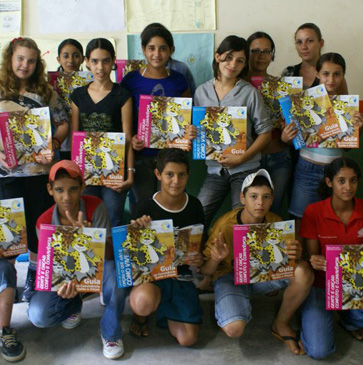
PROJECT FOR THE COEXISTENCE OF PEOPLE AND JAGUARS
Under the People and Jaguars Project, led by biologist Silvio Marchini, the FEC conducted a study to identify factors – besides the economic ones – that explain the variations in the hunting of jaguars along the Amazon’s agricultural frontier. The study sought to evaluate the knowledge, beliefs, attitudes and social norms that determine the hunting and killing of jaguars and pumas in the vicinity of the Cristalino State Park.
Having identified the factors, an educational and communication program was developed to increase local knowledge and awareness, in order to change attitudes and promote behaviour that is compatible with conservation of the species. Supporting materials, such as the Guide to the Coexistence of People and Jaguars, written by Silvio Marchini and Ricardo Luciano, and educational booklets for children, owe much to the efforts of Tiago Henicka, a biologist who worked directly on this project). The traveling theatre show – Sassá, the jaguar – presented in schools by the Experimental Theatre group, is another successful initiative.
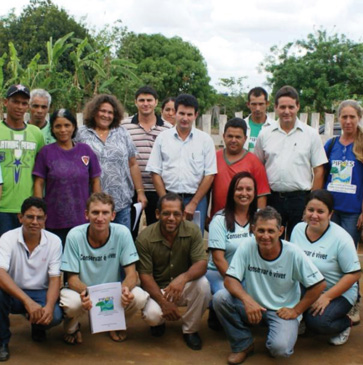
LOCAL DEVELOPMENT
Sustainable economic activities around the Cristalino State Park can contribute to its preservation and reduce the present environmental impacts, as the communities inhabiting the buffer zone are seeking to develop sustainable economic activities that can yield income generation, improved quality of life and environmental protection.
Consequently, in 2011, an Analysis and Participatory Planning of the Gleba Divisa Lands (Novo Mundo/Mato Grosso state) was conducted through a partnership between the Cristalino Ecological Foundation, Fauna & Flora International, the Tarley Rossi Villela state school and the Association for the Sustainable Development of the Gleba Divisa Lands, plus support from several local organizations. This effort is part of the Integrated Project for the Conservation and Economic Sustainability of the Gleba Divisa (PIPAES), which is integrating endeavours, technical cooperation and grassroots arrangements to develop a process of protagonism that can bring sustainability to the region. The document includes the methodological aspect of the participatory process, as well as a Conservation and Development Plan for the next 10 years.